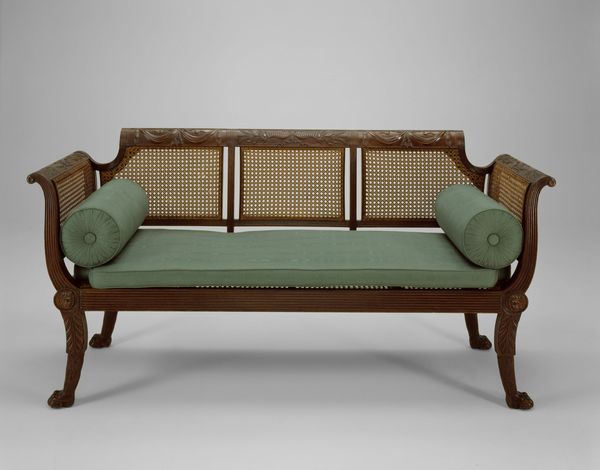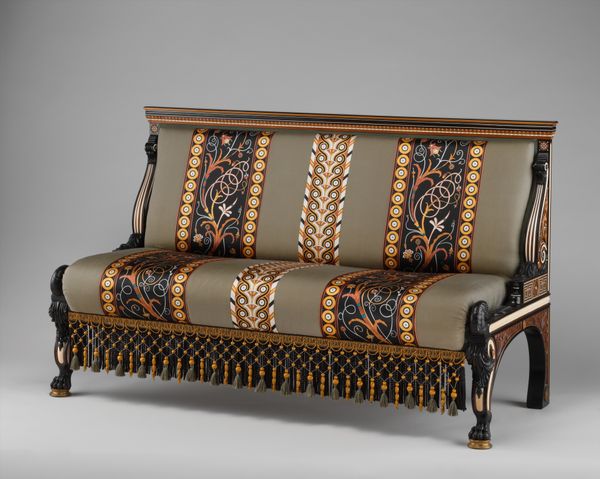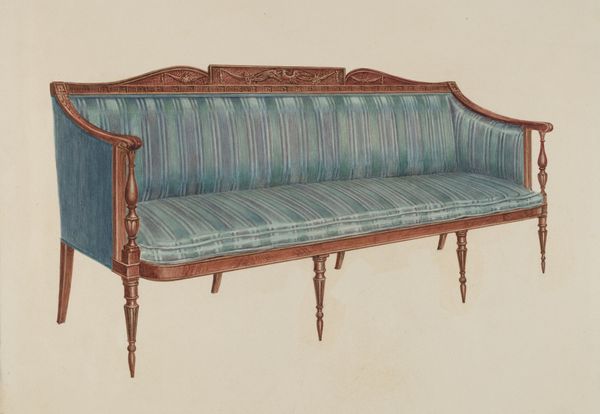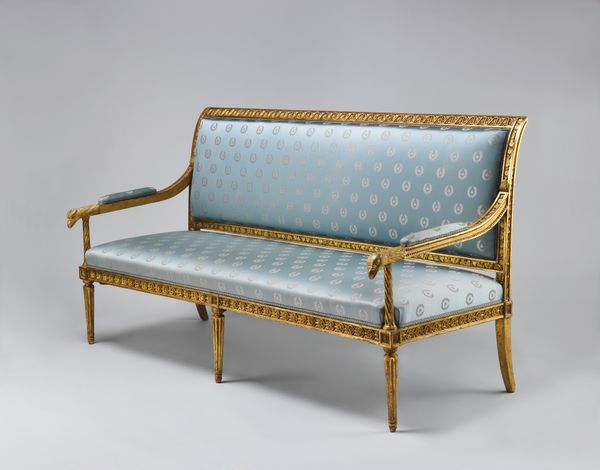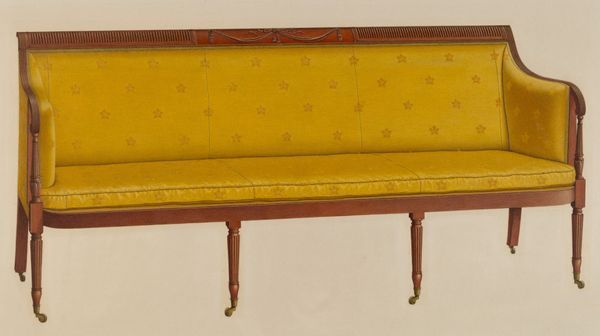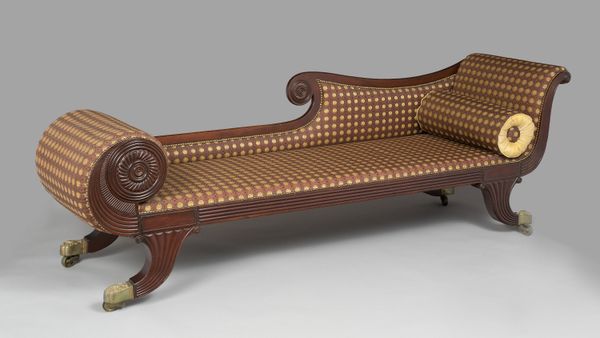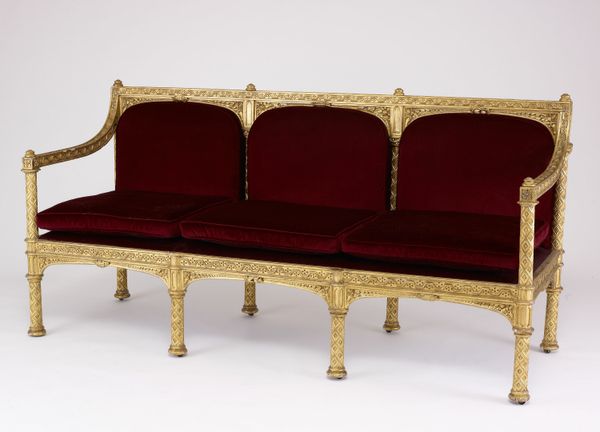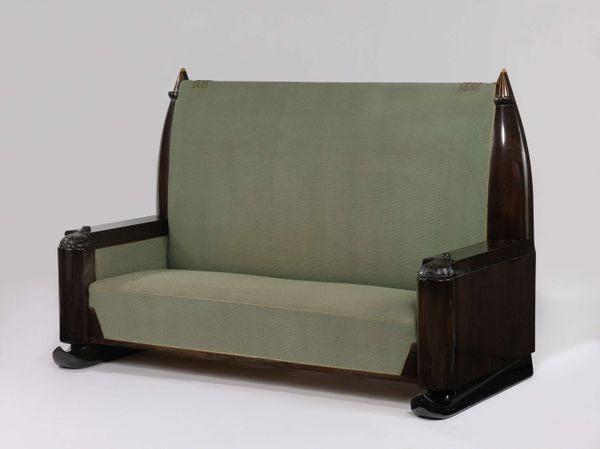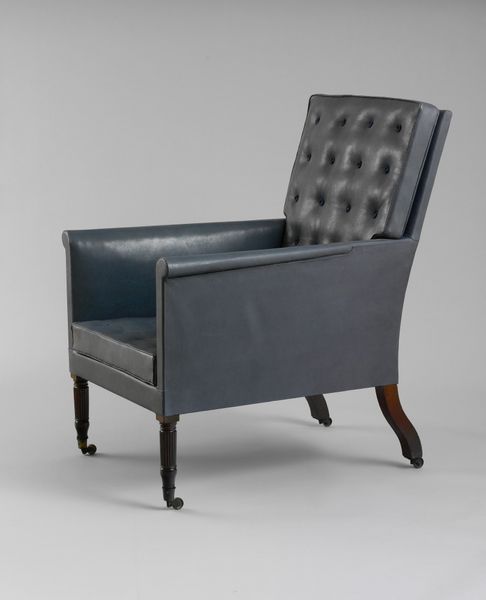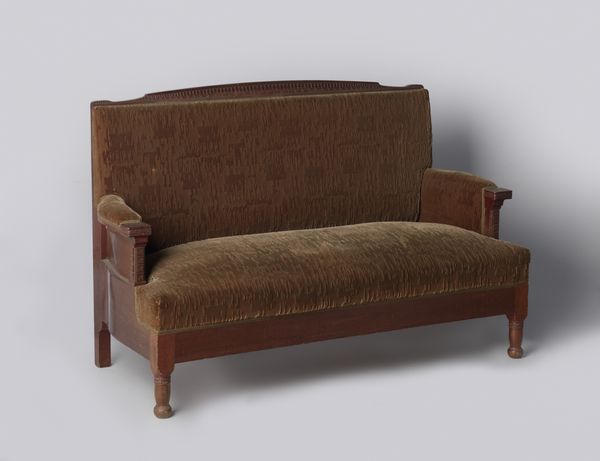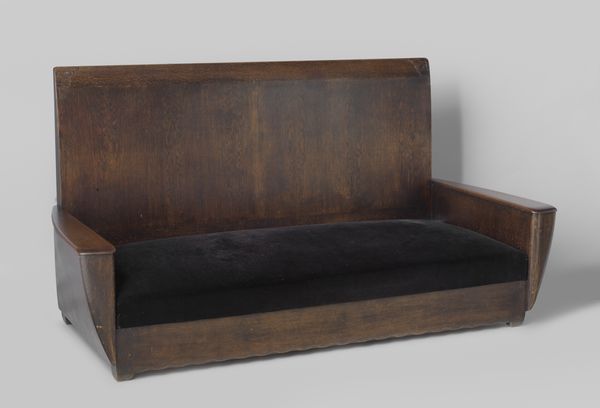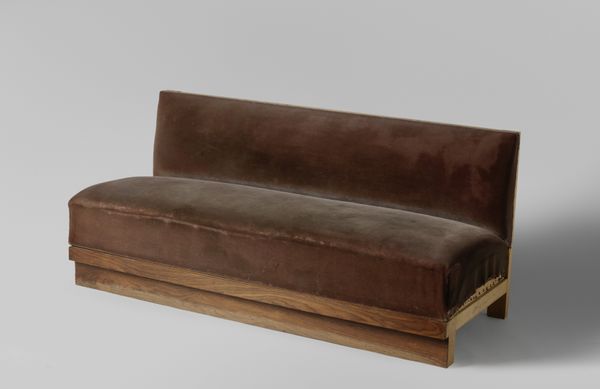
textile, wood
#
neoclacissism
#
furniture
#
textile
#
united-states
#
wood
#
decorative-art
Dimensions: 37 x 80 1/4 x 25 in. (94 x 203.8 x 63.5 cm)
Copyright: Public Domain
Editor: Here we have Duncan Phyfe’s “Sofa,” crafted between 1805 and 1815. It's currently housed in the Metropolitan Museum of Art, incorporating wood and textile elements. It's such a visually striking piece. What stands out to me is the severe linearity of the upholstery, especially against the curve of the armrests. What do you make of it? Curator: Its Neoclassical style is expressed through precise lines, balanced proportions, and restrained ornamentation, primarily visible along the dark wood frame. What is particularly crucial is the interplay between the solid wood and void created by its shape, most apparently between each leg and the seat. Do you agree? Editor: Yes, I do! Especially that repetition from the frame. The dark wood gives it this almost stoic quality. Is there a purpose behind the upholstery, though? Curator: Consider the tension between its tactile surface and its flat color, its function. We cannot dismiss how the linear pattern directs our eye from left to right, further emphasizing the sofa’s horizontal aspect. Are there specific elements which appeal to you? Editor: I noticed how it contrasts against all of that empty space beneath, thanks to its coloring. The linear design definitely forces you to view it from left to right! Curator: Its color complements the whole of the woodwork to enforce the concept of harmony, in contrast with a world that has a natural chaos. Editor: Right, there’s an elegance and balance. I suppose that's why this work has endured throughout time! Curator: I've never considered Phyfe in the same way as painting, but that balance is precisely what makes the viewing experience a complete visual statement in itself.
Comments
No comments
Be the first to comment and join the conversation on the ultimate creative platform.
